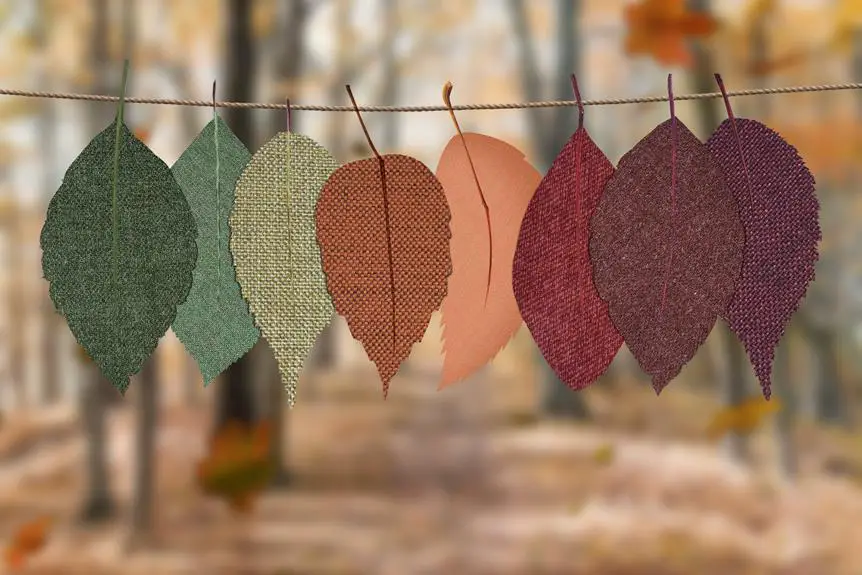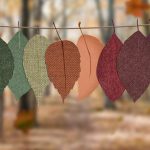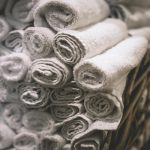Are you concerned that mold might be damaging your fabrics?
In 'Is Mold Ruining Your Fabrics? 5 Easy Solutions,' you'll discover practical strategies to address this issue. This guide offers expert insights on understanding mold growth, identifying affected fabrics, and implementing both natural and chemical remedies for mold removal.
Additionally, you'll learn effective techniques for preventing future mold infestations. With a focus on mastery, this resource is designed to equip you with the knowledge and solutions needed to protect your fabrics from the damaging effects of mold.
Key Takeaways
- Mold thrives in damp, warm, and humid environments, making fabrics stored in such conditions susceptible to growth.
- Natural fibers like cotton, wool, and silk, as well as leather and suede items, are particularly prone to mold growth.
- Natural remedies like vinegar treatment and sunlight exposure can help remove mold and eliminate musty odors from affected fabrics.
- To prevent future mold infestations, control moisture, use dehumidifiers, consider moisture-resistant materials, regularly clean fabrics, and store them in well-ventilated areas.
Understanding Mold Growth
Do you know where mold is most likely to grow on your fabrics? Understanding mold growth is crucial in preventing damage to your textiles.
Mold thrives in damp, warm, and humid environments, making fabrics stored in these conditions especially susceptible. To prevent moisture from accumulating and creating a breeding ground for mold, ensure proper ventilation and airflow in storage areas.
Additionally, understanding spore reproduction is key to combatting mold growth. Mold reproduces through spores that can easily spread and settle on various surfaces, including fabrics. By comprehending this process, you can take proactive measures to hinder mold spores from finding a suitable environment to multiply.
Implementing proper storage techniques, such as using airtight containers and moisture-absorbing products, can effectively mitigate the risk of mold growth on your fabrics. By grasping the factors that contribute to mold growth and reproduction, you can strategically prevent its onset and preserve the quality of your fabrics.
Identifying Affected Fabrics
Where exactly should you be looking for signs of mold on your fabrics? When evaluating damage, start by inspecting areas that are prone to moisture and lack of ventilation, such as basements, bathrooms, and closets. Check for visible signs of mold, including black, green, or white spots, as well as any musty odor. Fabrics such as curtains, upholstery, and clothing are particularly susceptible to mold growth. Pay close attention to natural fibers like cotton, wool, and silk, as well as synthetic materials such as polyester and nylon. Mold can also thrive on leather and suede items, so be sure to examine these closely as well.
Once you've identified the affected fabrics, it's crucial to address the issue promptly using appropriate fabric care techniques. For washable fabrics, consider using hot water and detergent to remove mold and mildew stains. Non-washable items may require professional cleaning or treatment with specialized products designed to eliminate mold. In any case, it's essential to thoroughly dry the fabrics after cleaning to prevent mold from returning.
Proper care and maintenance can help prevent mold growth and preserve the integrity of your fabrics.
Natural Remedies for Mold Removal
Inspecting affected fabrics in areas prone to moisture and lack of ventilation, you can use natural remedies for mold removal to effectively address the issue.
One effective natural remedy for mold removal is a vinegar treatment. Mix equal parts white vinegar and water in a spray bottle and thoroughly saturate the affected fabrics. Let the solution sit for an hour, then scrub the fabric with a brush and rinse with water. The acidic nature of vinegar makes it a powerful mold killer.
Additionally, sunlight exposure is an excellent natural method for removing mold from fabrics. Sunlight has natural disinfecting properties and can help kill mold spores. Simply place the affected fabrics in direct sunlight for several hours. Be sure to turn the fabrics over to ensure both sides are exposed to the sunlight. This method not only helps remove mold but also eliminates musty odors.
Using Chemical Solutions Safely
To ensure the safe usage of chemical solutions for mold removal from fabrics, always wear protective gloves and a mask to avoid direct contact and inhalation of the substances.
When using chemical solutions, follow these guidelines for safe handling and proper disposal:
- Chemical Application
- Read and follow the manufacturer's instructions for the correct application of the chemical solution onto the affected fabric.
- Test the solution on a small, inconspicuous area of the fabric to ensure compatibility and to avoid any potential damage.
- Protective Gear
- Wear protective clothing, including long sleeves and pants, in addition to gloves and a mask, to minimize skin contact and inhalation of fumes.
- Ensure the work area is well-ventilated to reduce the concentration of fumes and aid in the dissipation of the chemical solution.
- Proper Disposal
- Dispose of any leftover chemical solution as per local regulations. Avoid pouring it down the drain or throwing it in the regular trash.
- Look for designated disposal facilities or hazardous waste collection sites in your area.
Preventing Future Mold Infestations
When applying chemical solutions for mold removal, consider implementing preventive measures to stop future mold infestations on your fabrics.
The key to preventing mold from ruining your fabrics is moisture control. Start by identifying and fixing any sources of excess moisture in your home, such as leaks or high humidity. Use dehumidifiers in areas prone to dampness, like basements and bathrooms, to maintain optimal humidity levels. Additionally, ensure proper ventilation in your home by using exhaust fans in kitchens and bathrooms and opening windows regularly to allow fresh air to circulate.
To further prevent mold growth on your fabrics, consider using moisture-resistant materials or fabrics that are easy to clean and dry quickly. Regularly inspect and clean your fabrics, especially in areas with high moisture levels. Vacuum and clean upholstery, carpets, and curtains to remove any mold spores that may have settled.
Lastly, store fabrics in well-ventilated areas and avoid packing them tightly together, as this can create an environment conducive to mold growth.
Frequently Asked Questions
What Are the Potential Health Risks Associated With Mold-Infested Fabrics?
Exposure to mold-infested fabrics poses potential health risks including respiratory issues, skin irritation, and allergies. To prevent these risks, regularly clean and dry fabrics, control humidity levels, and promptly address any signs of mold growth.
Can Mold Growth on Fabrics Be Prevented Entirely, or Is It Inevitable in Certain Environments?
Preventing mold on fabrics is possible with proper care. Regular cleaning, good ventilation, and controlling humidity levels can help. Keep fabrics dry and clean to minimize the risk of mold growth, especially in environments prone to moisture.
Are There Any Specific Types of Fabrics That Are More Susceptible to Mold Growth Than Others?
When it comes to types of fabrics, some are more susceptible to mold growth than others. Preventing mold on delicate or specialty fabrics is crucial to avoid health risks and long-term damage. Proper removal methods are essential.
How Can I Effectively Remove Mold From Delicate or Specialty Fabrics Without Causing Damage?
To gently clean delicate or specialty fabrics and protect them from mold, mix equal parts white vinegar and water in a spray bottle. Spritz the affected area, let it sit, then gently blot with a clean cloth. Repeat as needed.
Are There Any Long-Term Effects on Fabrics After Mold Has Been Removed, Such as Lingering Odors or Weakened Fibers?
After removing mold, ensure fabric preservation by airing out and using odor removal techniques. To prevent mold, maintain proper fabric care by keeping items clean and dry. Lingering odors and weakened fibers are possible long-term effects.
- How Does Ring Spun Cotton Affect Garment Fit and Shape Retention? - August 13, 2024
- What Are the Challenges in Producing Ring Spun Cotton? - August 13, 2024
- Is Ring Spun Cotton Suitable for Plus-Size Clothing? - August 13, 2024




